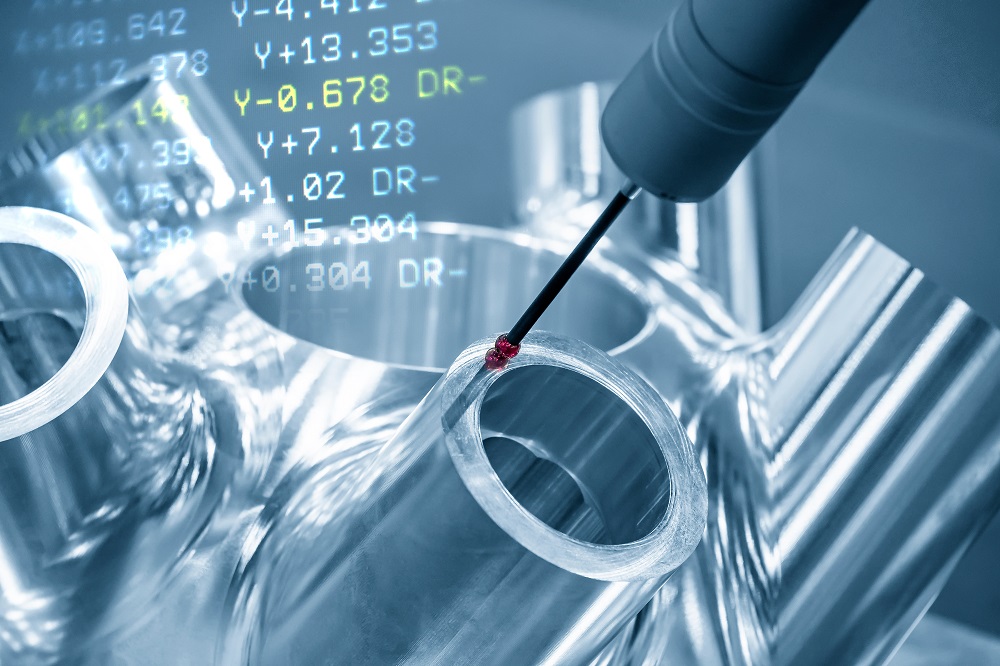Manufacturing labor costs have risen sharply over the past decade and continue to climb each year. A recent report by the U.S. Department of Labor’s Bureau of Labor Statistics found that industrial unit labor costs rose by 3.4% in Q1 2023, as a result of increased hourly rates and decreased productivity. Controlling manufacturing labor costs should be a top priority, but focusing only on direct reduction strategies could cause leaders to overlook other opportunities.
Leveraging metrology effectively in an operation can provide a number of benefits on the production floor that inadvertently drive down costs. Here’s what you need to know.
What Is Metrology?
In the most basic terms, metrology is the science of measurement. When applied to manufacturing, it’s a quality assurance methodology for maintaining accuracy and precision in various production processes. It involves the use of specialized equipment, tools, and techniques to:
- Inspect and conduct dimensional measurements and surface analysis of workpiece materials and finished products.
- Create measurement benchmarks to account for systemic uncertainty or errors.
- Monitor and control various manufacturing processes, ensuring they are operating within acceptable parameters, with minimal variations.
Metrology plays a crucial role in manufacturing by ensuring products meet the required specifications and quality standards. As a byproduct, it can also help manufacturers achieve significant cost savings, including in labor spending.
How Metrology Reduces Manufacturing Labor Costs
By actively investing in metrology, businesses can reap significant savings in manufacturing labor costs. Here’s how:
- Process optimization. As a result of measuring workpiece and machine calibrations during production, metrology can reduce production time by eliminating rework or providing real time insights. Metrologists also collect process data which can help identify bottlenecks and inefficiencies throughout the entire operation that can unnecessarily lengthen production times and labor hours. Manufacturers can leverage this insight to optimize their processes, eliminate unnecessary steps, and otherwise streamline workflows to reduce labor hours and increase productivity.
- Higher and more consistent finish quality. Using metrology to keep machines and tools properly calibrated, manufacturers can ensure parts are produced to the highest quality standards, in alignment with customer needs and expectations. Quality assurance efforts made upfront reduce the amount of rework necessary for each product, driving up labor productivity. Operators can also confidently increase throughput without sacrificing quality, further saving manufacturing labor costs through efficiency gains.
- Preventive maintenance. A critical part of calibration is monitoring machine and equipment performance, as well as the condition of cutting tools. Operators can catch mechanical issues and repair them before they devolve into more costly problems. Preventive maintenance ensures machines are always in near-perfect condition, minimizing downtime for reactive maintenance that hurts labor productivity. This applies to both the production and metrology machines and equipment.
- Automation integration. Many metrology tools use robotics and automation to gather ultra-precise measurement data and properly calibrate machines to provide in-situ production monitoring. This can complement automation solutions manufacturers already have in place and facilitate more seamless and efficient workflows. Automating more processes has a way of compounding efficiency gains, which can generate cost savings in a variety of areas, including labor costs.
Metrology automation is a great way to improve your operation, simultaneously raising production standards and reducing labor costs. However, it’s an advanced and expensive process to invest in, and therefore should be evaluated carefully. Instead, establish a solid foundation for savings on the shop floor, with granular attention to detail, including the quality of your cutting fluid and proper fluid maintenance.
Master Fluid Solutions® is the creator of TRIM® cutting fluids, providing a full array of straight oils, synthetics, semisynthetics, emulsions, microemulsions, neosynthetics, and more, for every type of cutting and grinding operation. In addition to offering the highest quality products in the industry, Master also provides in-depth education about cutting fluid maintenance to managers and production workers alike. Fill out this form to test any of our TRIM fluids for free, or get in touch to schedule a site visit from our team.

